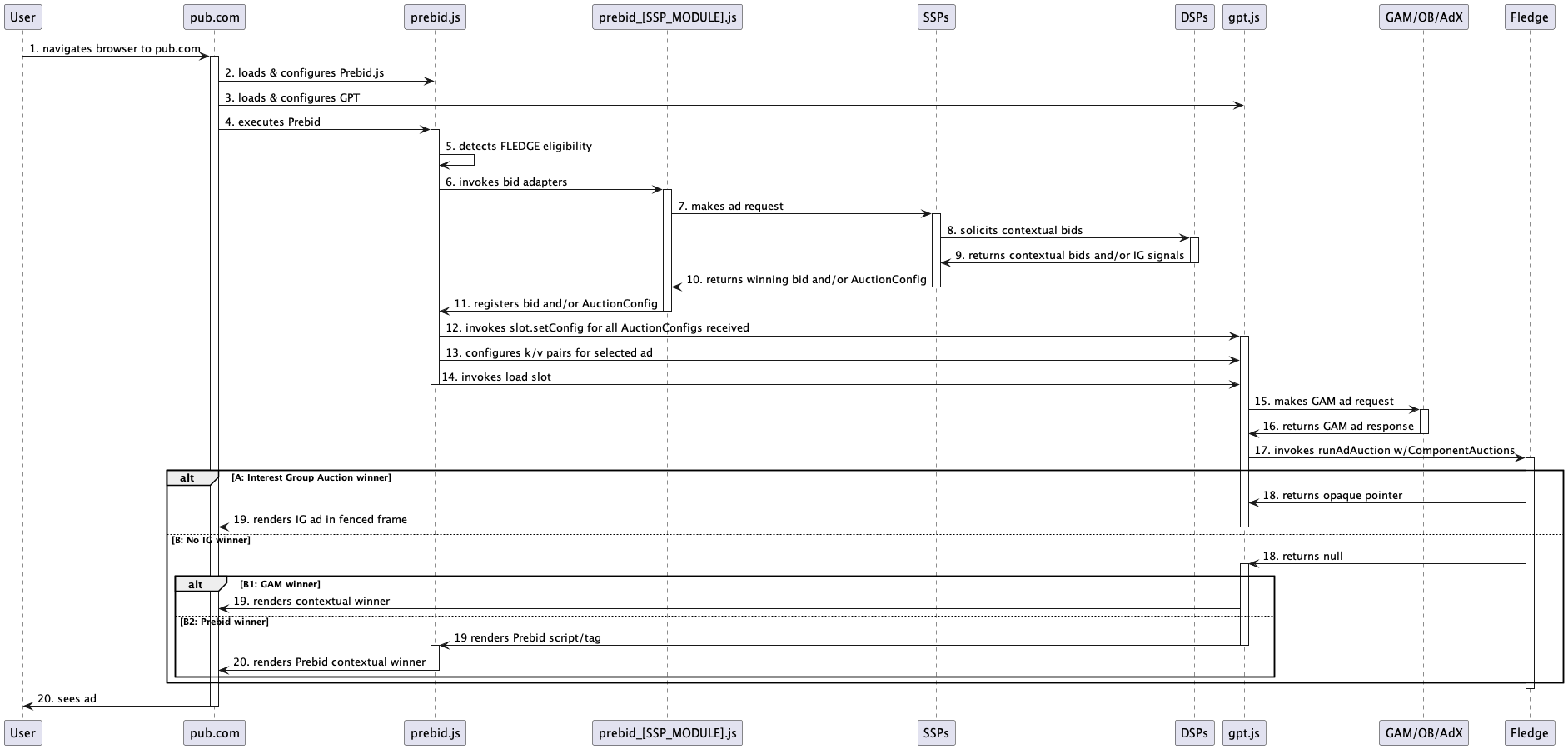It’s worth noting that this matches the results from our Fledge tests, where more than 50% of auctions running for actual users eligible for Origin Trials are taking over 1s.
We’ve been running Fledge auctions on real publishers’ pages (impressions bought via direct integration or classic RTB). Interest Groups were created in browsers visiting our partners’ pages through our production infrastructure.
Measurements done:
- contextual signals fetch duration on publisher page (
ctxTime) runAdAuction()call duration on publisher page: (auctionTime)- only our IGs allowed
- trivial seller script
- no trusted scoring signals
- all IGs had same bidding logic urls, same wasm urls and same tbs urls
- server-side processing time of tbs requests (
tbsReq) - delays between contextual and tbs requests measured server-side (
ctxTillTbs)- they were correlated using FOT#1
forDebuggingOnlyAPIs - these durations include:
- contextual signal response delivery
- contextual signal response processing and starting
runAdAuction()on the publisher page - loading IGs (may be affected by other DSPs?)
- preparing bidding worklet
- tbs request delivery
- they were correlated using FOT#1
- delays between tbs requests and post auction notifications measured server-side (
tbsTillReports)- a lot happens during this time, e.g.:
- worklets reinitialization before the reporting phase
- all JS computation in worklets
- auction postprocessing and notifications request delivery
- all machines were in the same DC (contextual signals servers, BYOS TBS and notification servlets)
In order to factor out the network latency impact, we’ve aggregated only auctions where contextual requests took over 150ms. In that case, over 10% of auctions took more than 1s, which is still disturbing.
Sample size: 54406 auctions
Average values around 90th percentile (about 544 auctions each, ordered by auctionTime):
ctxTime auctionTime ctxTillTbs tbsReq tbsTillReports
pct_rank
85 100.431066 928.118015 470.099265 14.446691 666.961397
86 101.706434 968.390993 483.262868 14.334559 714.167279
87 101.636581 1015.791912 518.959559 15.363971 717.676471
88 100.488235 1064.030331 534.306985 15.924632 795.295956
89 101.479779 1122.432353 540.909926 15.457721 824.152574
90 102.788235 1186.440074 585.933824 14.454044 855.981618
91 101.228676 1261.586029 587.205882 15.321691 975.369485
92 101.420956 1357.628125 653.231618 13.808824 1006.093750
93 101.958640 1481.707169 676.626838 14.702206 1092.836397
94 105.037132 1633.292647 723.387868 15.604779 1268.215074
Hi,
We would like to share our initial observations with regards to the performance of running FLEDGE auctions. This topic was previously addressed (including an issue #215) but mainly in the context of running JS in a bidding worklet environment. This time we would like to discuss potential latency bottlenecks in an end-to-end runAdAuction call.
We manage to run FLEDGE auctions in a production environment (which means real publishers, real advertisers and our bidding infrastructure with our bidding logic).
In this scenario we run a Chromium browser with FLEDGE enabled, then visit an advertiser’s page (which adds us to 3 interest groups), and finally visit the publisher’s page which runs an auction for these IGs. To measure performance we take advantage of the trace event profiling tool (chrome://tracing).
Benchmark 1 (Intel Core i7-6820HQ 2.7 GHz, Linux, fast internet connection):
Benchmark 2 (Intel Core i7-4600U 2.1GHz, Windows, slow internet connection):
Our observations:
bidder_worklet_generate_bidbut before both a) requesting trusted signals and b) downloading JSBearing in mind that runAdAuction would be run for all participating buyers, and fetching ctx signals and ad rendering will take additional time, we are afraid that this level of latency would not be acceptable for an end user.
The latency of TBS requests could be reduced by replacing BYOS by the key-value TBS and/or by improvements proposed in #333 (TBS prefetching, caching etc.) but it is not clear what to do with the other latencies.
Are you aware of these issues? Do you have plans to address them in the future?
Best regards, Bartosz